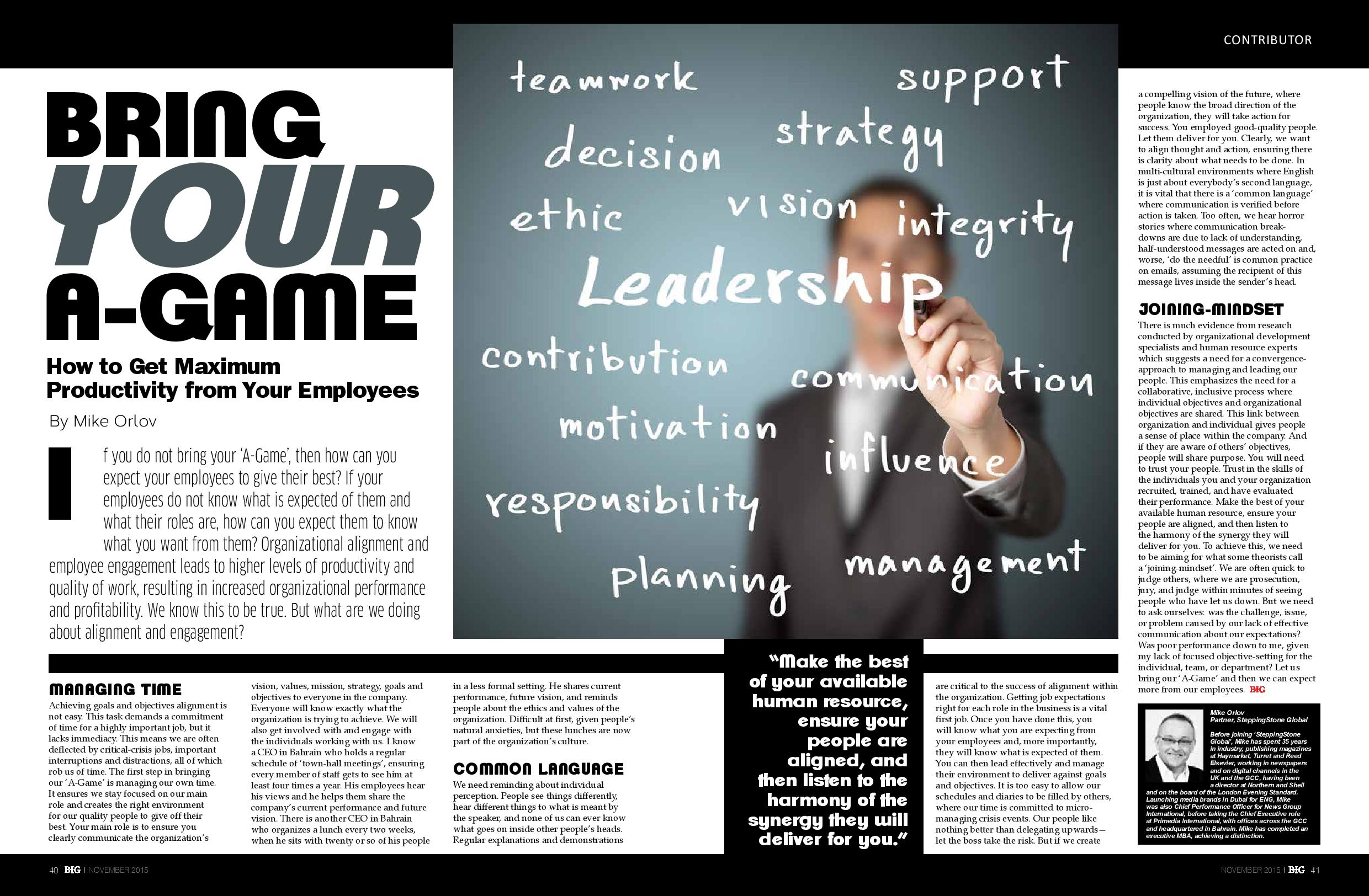If we do not bring our ‘A-Game’, then how can we expect our employees to give of their best? If your employees do not know what is expected of them and what their roles are, how can you expect them to know what you want from them? Organizational alignment and employee engagement leads to higher levels of productivity and quality of work, resulting in increased organizational performance and profitability – we know this to be true. But what are we doing about alignment and engagement?
Achieving goals and objectives alignment is not easy. This task demands a commitment of time for a highly important job, but it lacks immediacy. This means we are often deflected by critical-crisis jobs, important interruptions and distractions, all of which rob us of time.
The first steps in bringing our ‘A-Game’ is managing our own time, ensures we stay focused on our main role; creating the right environment for our quality people to give of their best. Your main role is to ensure you clearly communicate the organization’s vision, values, mission, strategy, goals and objectives to everyone in the company.
Everyone will know exactly what the organization is trying to achieve. We will also get involved with and engage with the individuals working with us. I know a CEO in Bahrain who holds a regular schedule of ‘town-hall meetings’, ensuring every member of staff gets to see him at least four times a year. His employees hear his views and he helps them share the company’s current performance and future vision.
There’s another CEO in Bahrain who organizes a lunch every two weeks, when he sits with twenty or so of his people in a less formal setting. He shares current performance, future vision and reminds people about the ethics and values of the organization. Difficult at first, when this process started given people’s natural anxieties, but these lunches are now part of the organization’s culture.
We need reminding about individual perception; people see things differently, hear different things to what is meant by the speaker, and none of us can ever know what goes on inside other people’s heads. Regular explanations and demonstrations are critical to the success of alignment within the organization.
Getting job expectations right for each role in the business is a vital first job. Once you have done this, you will know what you are expecting from your employees and, more importantly, they will know what is expected of them. You can then lead effectively and manage their environment to deliver against goals and objectives.
It is too easy to allow our schedules and diaries to be filled by others, where our time is committed to micro-managing crisis events. Our people like nothing better than delegating upwards; let the boss take the risk. But if we create a compelling vision of the future, where people know the broad direction of the organization, they will take action for success. You employed good-quality people; let them deliver for you.
Clearly we want to align thought and action, ensuring there is clarity about what needs to be done. In multi-cultural environments where English is just about everybody’s second language, it is vital there is a ‘common language’ where communication is verified before action is taken. Too often we hear horror stories where communication break-downs are due to lack of understanding, half-understood messages are acted on and, worse, ‘…do the needful…’ is common practice on emails, assuming the recipient of this message lives inside the senders head.
There is much evidence from research conducted by organizational development specialists and human resource experts which suggests a need for a convergence-approach to managing and leading our people. This emphasizes the need for a collaborative, inclusive process where individual objectives and organizational objectives are shared. This link between organization and individual gives people a sense of place within the company. And if they are aware of others’ objectives, people will share purpose.
You will need to trust your people. Trust in the skills of the individuals you and your organization recruited, trained and have evaluated their performance; make the best of your available human resource, ensure your people are aligned, and then listen for the harmony of the synergy they will deliver for you.
To achieve this, we need to be aiming for what some theorists call a ‘joining-mindset’. We are often quick to judge others, where we are prosecution, jury and judge within minutes of seeing people who have let us down. But we need to ask ourselves, was the challenge, issue, problem caused by our lack of effective communication about our expectations. Was poor performance down to me, given my lack of focused objective-setting for the individual, team or department? Let us bring our ‘A-Game’ and then we can expect more from our employees.

